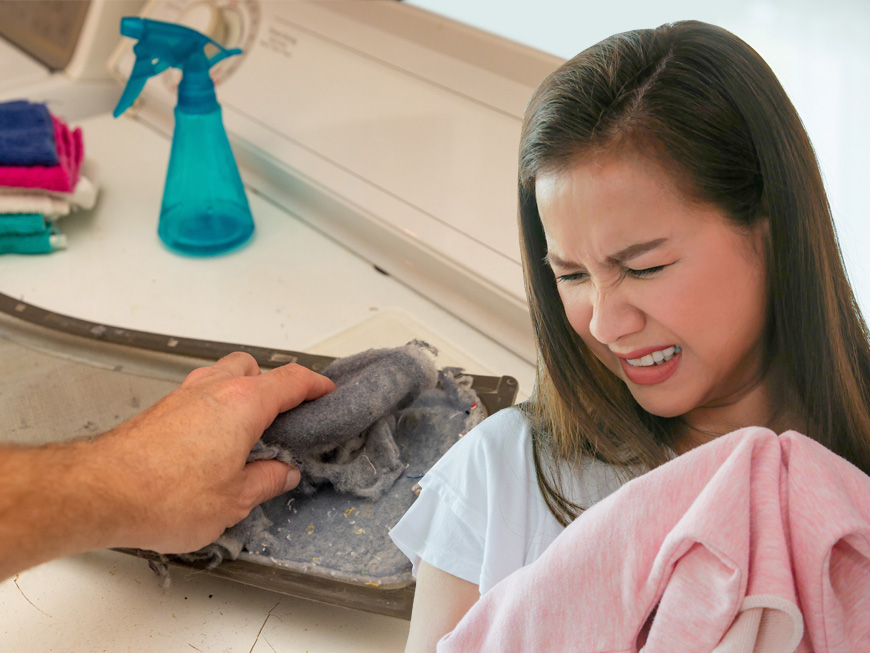Cleaning your washing machine (washer) could mean cleaning out the filter, clearing the detergent drawer, rinsing the tub with vinegar or baking soda, cleaning the door seal, or something as simple as just running the tub cleaning mode. It varies when its time to clean your washing machine.
Sometimes you may be facing a serious problem and may need to call on professional help. Doing so means your washer needs a thorough clean and it may cost you up to RM400 for a few hours of work from the experts. But how do you know what level of cleaning you would need, or that you need to even clean your washer in the first place?
Here are 4 telltale signs that it’s time to peek under the hood of your washer and determine the best course of corrective action:
1. You find lint on your freshly washed laundry
It’s normal to find lint in your pockets. It’s not normal to find lint on your freshly washed laundry. That’s a sign that the filter for your washer is clogged up and needs cleaning. The filter can normally be found around the lower edge of your washer, and may have a cover. Otherwise it is probably located along your washer’s drum, and looks like a grille. If you’re not sure, simply pull out the manual to find out. Clearing the lint basically means washing away the accumulated debris and shouldn’t take long. Consider it periodic maintenance.
2. Or even worse, there’s dirt on your freshly washed laundry
While it is not dirt per se, it does look like dirt. It’s likely to be scruds, and make it seem as if soil had entered the washer while your laundry was being washed. Scruds look like brown, blotchy stains and this waxy foe usually comes about via the mixture of detergent and fabric softener. It could look like brown flakes as well, which thankfully don’t stain like scruds, but is still a nuisance. Those are caused by soap scum, which happens when detergent mixes with the minerals in water to create a layer of insoluble oil film, and they manifest as little flakes. Scrud and scum are the result of excess or unsuitable washing agents. Perhaps change your detergent, avoid using fabric softener, and yes clean your washer’s filter and detergent drawer too.
3. Your clothes are starting to make you itch or develop rashes
This could be a sign of inappropriate laundry detergent and/or fabric softener being used, especially if you have sensitive skin; or it could be that mold and mildew are beginning to get the better of your washer. If it’s just the detergent and/or softener, then your problem is solved. If not, then there may be intruders in your washer that you need to flush out. It might require a more thorough cleansing of the machine, particularly the drum. In this case it’s not a bad idea to call professionals to start assessing if there’s anything wrong with the appliance or if there’s anything from it that’s harming your clothes and skin.
4. Your washing machine starts smelling funky
If you open the door to your washer and a strong unpleasant smell hits you, then you have a mildew problem. This is more often a problem with front-loader machines, as they use gaskets (circular rubber lining for the door) to seal water in during washes. Under the gaskets mildew can thrive and cause you a number of problems, not least having that horrid mildew odor transfer onto your clothes. Thankfully, mildew can be minimized with the use of baking soda and vinegar. Mix baking soda and water in equal parts (quarter a cup) and put the mixture into the detergent drawer. Throw a generous amount of vinegar into the drum, then start the wash cycle.
If you do not want the hassle of DIY solution when its time to clean your washing machine, use PREZ Washing Machine Cleaner to clean the drum through and through. Find out how it works in 5 easy steps.
